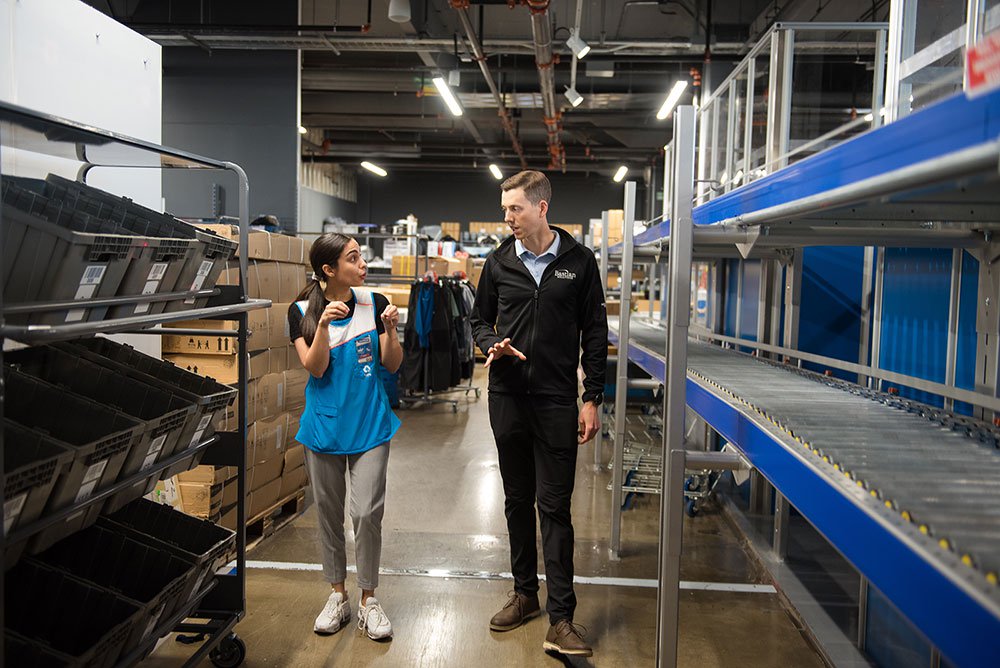
10 Warehousing Challenges & Key Factors to Finding the Right Automation Solution
Ahmed Arif | 12 April 2023
Managing a distribution or manufacturing facility can be challenging. It can be very easy to get so focused on the technical details of various automation solutions. The danger is that it’s easy to lose sight of the main goal, the reason behind adding automation – meeting business objectives and improving business operations.
At Bastian, we strive to help our customers thrive in their industry and to make a positive impact worldwide through innovation and leading solutions. Our experts work with numerous customers in various industries day in and day out. Whether requiring turnkey or custom solutions, we have found that there are 10 key challenges that most warehousing and distribution businesses face. To solve those challenges, there are 10 crucial decision-making criteria that customers in any industry should consider when choosing the right technology.
By addressing these challenges and considering these criteria, customers not only succeed but also better serve their own customers.
Top Customer Challenges in Warehousing
Working with variety of customers – for example, aerospace, automotive, consumer goods, ecommerce, food and beverage, manufacturing, pharmaceutical, retail and apparel and wholesale – and while all require varying solutions and configurations, we do see some common challenges. Below are the top 10 that most of our customers are looking to overcome.
- Inventory – Managing inventory levels and optimizing warehouse space utilization to ensure the efficient storage and movement of goods.
- Tracking – Maintaining accurate and efficient tracking and record-keeping systems to manage inventory and orders.
- Reliability – Ensuring timely and accurate order fulfillment and delivery to meet customer expectations and maintain customer satisfaction.
- Growth – Addressing the increasing demand for fast and flexible delivery options, driven by the growth of ecommerce.
- Labor – Attracting and retaining skilled and reliable workers to manage warehouse operations, particularly in light of labor shortages and competition for workers in the current job market.
- Compliance – Ensuring compliance with complex and evolving regulations related to safety, security and environmental sustainability.
- Innovation – Integrating new technologies and systems to improve efficiency and productivity while minimizing costs, without disrupting existing operations.
- Managing Disruptions – Managing the impact of supply chain disruptions, such as those caused by natural disasters, geopolitical risks, and global health emergencies like the COVID-19 pandemic.
- Market Changes – Adapting to changing market trends and consumer behavior, such as the shift to e-commerce, and the increasing demand for sustainable and socially responsible products and practices.
- Business Targets – Ensuring that the distribution center is aligned with the overall business strategy, and that it supports the organization's goals and objectives.
Factors in Choosing Automation Solutions
Knowing which factors are most important to your company can help narrow the search for a technology solution and system design. Similarly, it’s key to identify what factor or factors the business needs this solution to help support or solve.
- Cost – The cost of implementing and maintaining an industrial automation system can be significant, so it's important to weigh the potential benefits against the cost of implementation.
- Compatibility with Existing Systems – The automation system should be compatible with existing warehouse management systems and other technology solutions to ensure a smooth integration.
- Scalability – The automation system should be scalable to accommodate future growth and changes in demand.
- Flexibility – The automation system should be flexible enough to handle a range of products and order types and should be able to adapt to changes in customer demand.
- Reliability – The automation system should be reliable and able to operate efficiently and accurately without downtime or errors.
- Safety – The automation system should be designed with safety in mind and include appropriate safety features such as safety sensors and protective barriers.
- Ease of Use – The automation system should be user friendly and easy to operate, with minimal training required for staff.
- Maintenance and Support – The automation system should come with reliable maintenance and support services to minimize downtime and ensure optimal performance.
- Sustainability – The automation system should be designed with sustainability in mind, with features such as energy-efficient components and the ability to minimize waste.
- Return on Investment – The automation system should have a strong potential for return on investment, with measurable benefits such as improved productivity, accuracy, and efficiency.
Finding the Right Solution
Whether you’re improving your existing manufacturing and warehousing equipment, investing in expansion or all new automation, thinking thru these points can help keep the primary goals at the forefront. It’s very easy to get lost in the technical details and the flood of new technology options.
If you are ready to start discussing possible technology solutions or system designs, our experts are ready to help you achieve your competitive edge.
As the Senior Director of Regional Office Solutions for Bastian Solutions, Ahmed and his teams are responsible for helping our customers achieve their goals in manufacturing, distribution, warehouse management and logistics. A graduate of Purdue University, Ahmed has been with Bastian Solutions for more than sixteen years in a variety of roles.
Comments
No comments have been posted to this Blog Post
Leave a Reply
Your email address will not be published.
Comment
Thank you for your comment.